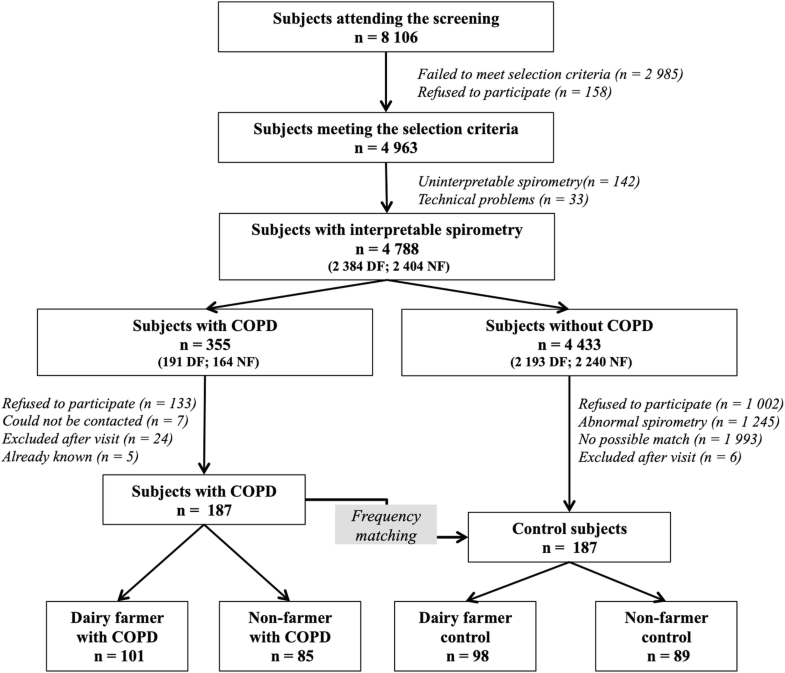Respiratory Research Research – Open Access
Matthieu Veil-Picard†, Thibaud Soumagne†, Rechana Vongthilath, Isabella Annesi Maesano, Alicia Guillien, Lucie Laurent, Pascal Andujar, Nicolas Roche, Stephane Jouneau, Benoit Cypriani, Jean-Jacques Laplante, Bruno Degano and Jean-Charles Dalphin
Abstract
Allergic mechanisms related to environmental and occupational exposure have been suggested to contribute to the development of chronic obstructive pulmonary disease (COPD).
Objectives
To investigate the relationships between atopy markers, persistent airflow limitation (PAL) and occupational exposure in dairy farmers.
Methods
Clinical and biological (total IgE and 21 allergen specific IgE) markers of atopy were assessed in 101 dairy farmers with PAL (DF-PAL), 85 non-farmers with PAL (NF-PAL) (both groups were prospectively included from a screening program performed between 2011 and 2015), and matched controls, i.e. 98 farmers without PAL (DF-controls) and 89 non-farming subjects without PAL (NF-controls). Occupational exposure in farmers was estimated using a validated questionnaire.
Results
Prevalence of allergy history was significantly higher in DF-PAL and in NF-PAL than in controls. Polysensitization, and sensitization to seasonal and food allergens were more frequent in DF-PAL than in DF-controls, respectively: 13.8% vs 1% (adjusted odds ratio (aOR): 17.5 (2.2–134), 11.9% vs 3.1% (aOR: 4.4 (1.2–7.2) and 16.8% vs 4.1% (aOR: 5.2 (1.7–7.2)). The prevalence of atopy markers was similar between NF-PAL patients and NF-controls.

Conclusions
PAL in farmers is associated with a high rate of markers of atopy, supporting atopy as a risk indicator.
